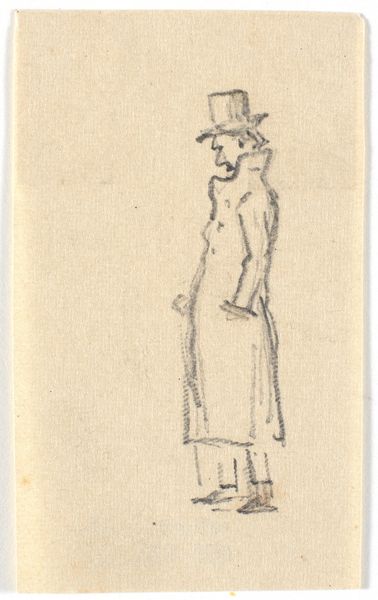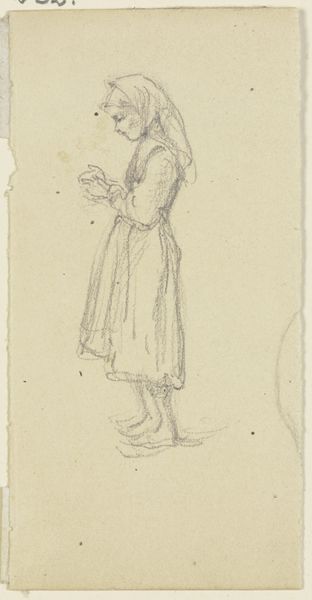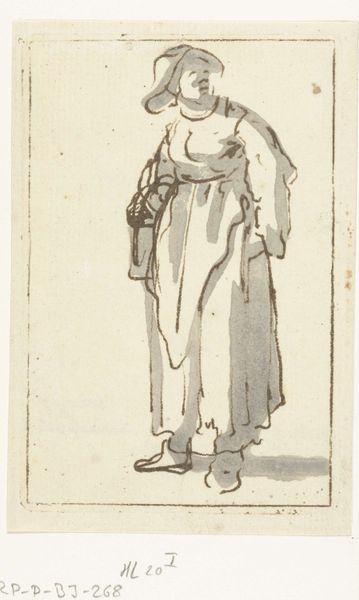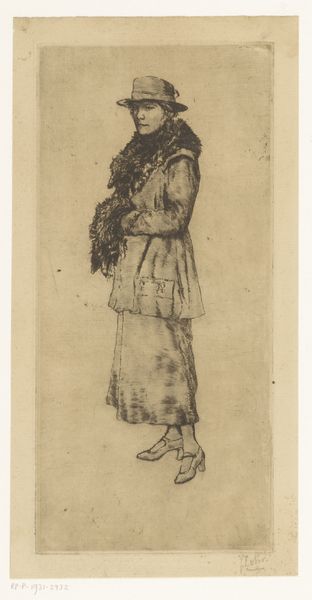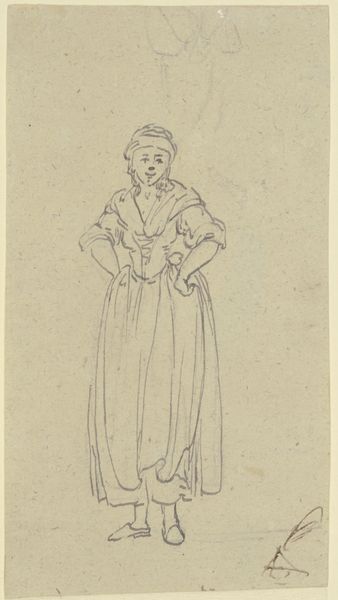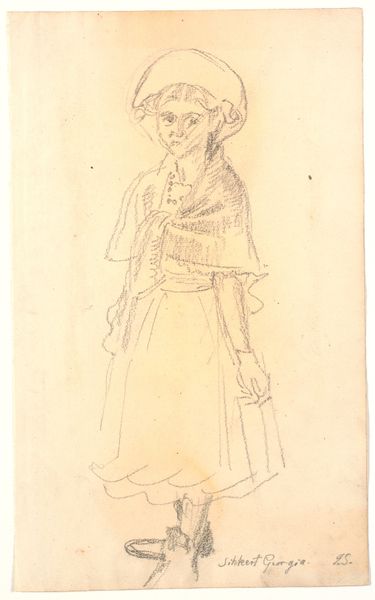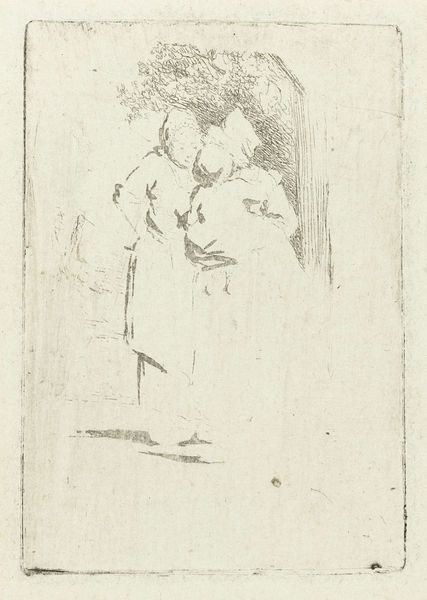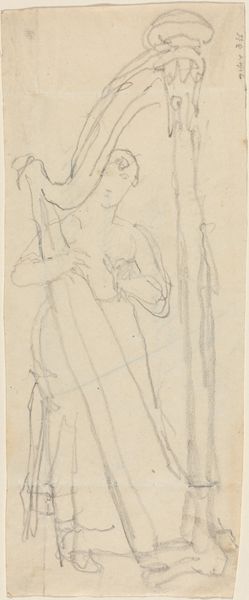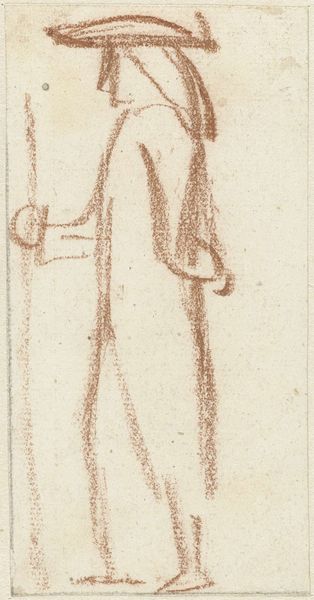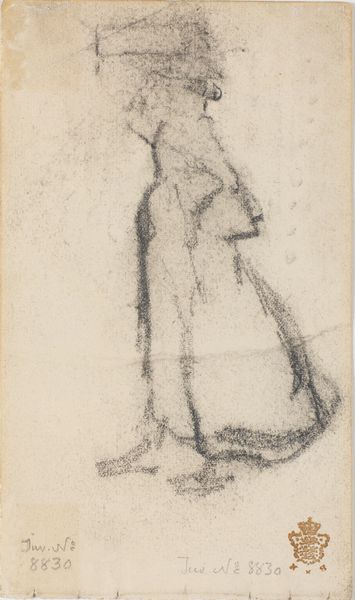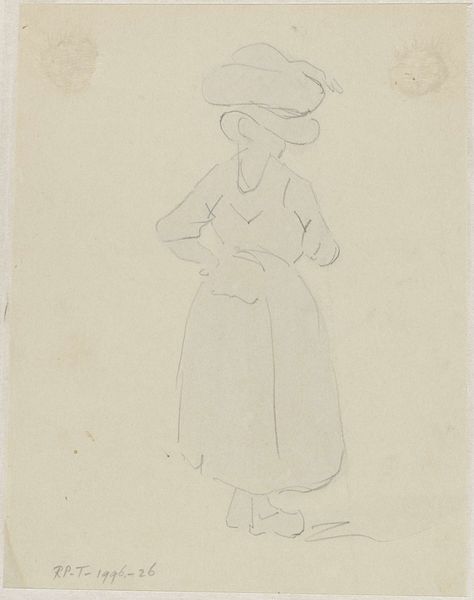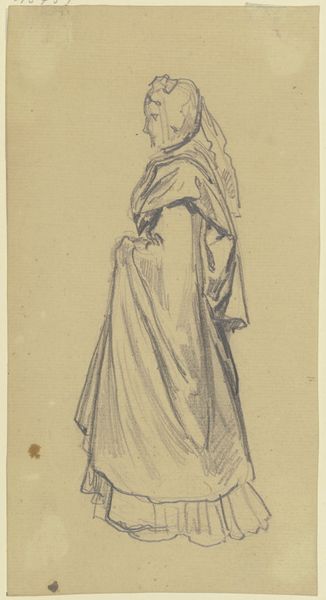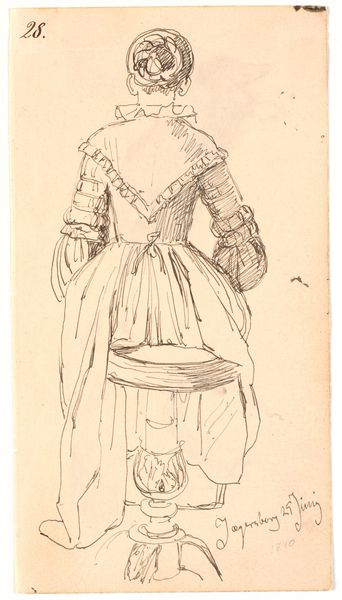
drawing, paper, ink
#
portrait
#
drawing
#
blue ink drawing
#
paper
#
personal sketchbook
#
ink
#
sketchbook drawing
#
watercolour illustration
#
genre-painting
Dimensions: height 117 mm, width 75 mm
Copyright: Rijks Museum: Open Domain
Curator: Ernst Willem Jan Bagelaar’s "Standing Peasant Woman", a genre painting sketched sometime between 1798 and 1837, immediately strikes me with its simplicity. A lone figure rendered in delicate ink on paper. It's unassuming, wouldn't you agree? Editor: Understated perhaps, but far from unassuming. I see resilience in the sketch, a portrayal, albeit simple, of labor and perhaps even quiet defiance. Curator: Interesting. From an art historical perspective, genre paintings served as records of daily life. How do you read that in this particular instance? Editor: The drawing embodies a moment in time, capturing a specific experience—one of a working-class woman who perhaps occupies the lower echelons of the late 18th or early 19th century agrarian society. Her posture, the set of her jaw, these visual clues subtly evoke an environment where existence demands toil and constant subjugation. The sketch may present a moment of dignity carved out from circumstances. Curator: Your approach reminds me of T.J. Clark's study of Courbet's social realism. How the political circumstances in post-revolutionary France demanded different ways to view rural subject matter. The peasant classes were being represented within a certain discourse and framework. How would that be the case in this drawing? Editor: Well, there’s something in her steadiness. How rooted she feels to the space around her that speaks volumes. It challenges established systems of representation. Bagelaar's sketch allows us a peek behind constructed social boundaries. Curator: I agree it makes you wonder. What do you think, generally, art offers in these types of cultural moments? Editor: I would say, at its best, art invites us to challenge pre-conceived ideas, to foster dialogues, to examine power and its consequences. It can be a space to amplify silenced voices. Curator: Yes, in those historical narratives art operates as both mirror and instigator. Thank you for offering an intriguing consideration of "Standing Peasant Woman" here at our museum. Editor: Thank you. It's through shared exploration of these pieces that we all may discover something new, enriching our perspectives.
Comments
No comments
Be the first to comment and join the conversation on the ultimate creative platform.
